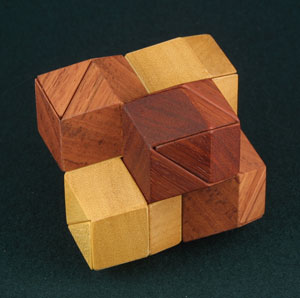
Larger Photograph (81.4K)
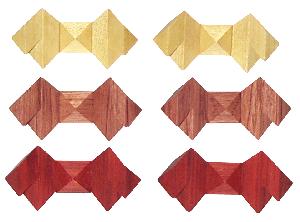
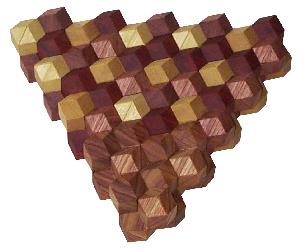
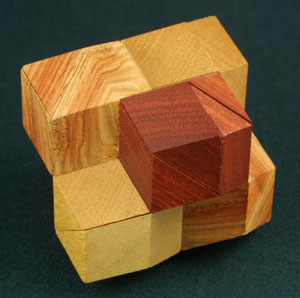
Larger Photograph (84.5K)
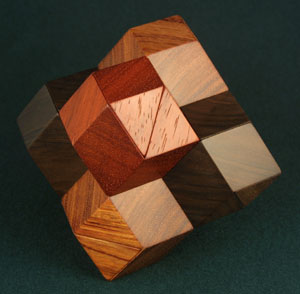
Larger Photograph (72.3K)
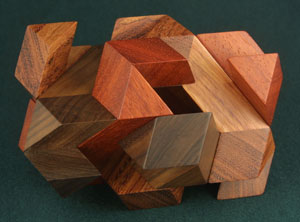
Larger Photograph (70.2K)
| Designer | : | Stewart Coffin | ||
| Craftsman | : | Tom Lensch (1st, 2nd & 3rd) Bart Buie (4th) Lee Krasnow (5th & 6th) | ||
| Category | : | Interlocking | ||
| Material | : | Brazilian Satinwood, Bubinga & Padauk (1st) Canarywood, Yellowheart & Bloodwood (4th) Bolivian Rosewood, Bubinga & Padauk (5th & 6th) | ||
| Pieces | : | 6 | ||
|
Looking like a cluster of six rhombic dodecahedrons, this is another member of the Diagonal burr family. This puzzle is difficult to disassemble because it has only one sliding axis and requires awkward placement of six fingers to begin pushing the two halves apart. Tossing it into the air with a spin will cause it to fly apart if the spin is close to the sliding axis. Assembly is fairly easy. As can be seen in the 2nd photograph, all six pieces are identical except for color, allowing multiple assemblies with incorrect coloring.
The rhombic dodecahedron is one of the very few symmetrical solids that pack to fill space. Two others are the cube and truncated octahedron. The 3rd photograph is a Cluster Buster cluster consisting of fifteen Cluster Busters. The three in front are Improved Cluster Busters. The Improved Cluster Buster has the same outward appearance as the Cluster Buster, but uses three dissimilar pairs of pieces making it a more difficult puzzle. The Cluster Buster has also been called Reluctant Cluster Stewart made 5 in 1973. Number 47 in his numbering system.
| ||||
